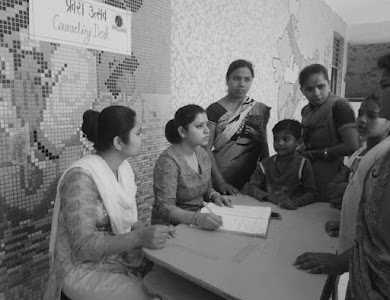Understanding Feminism In India
Feminism in India
Feminist
Movement in India and Challenges
Sex Ratio
For Women in India, discrimination begins in the womb and at birth. In recent Times the situation is much better where the number of females per 1,000 males in India is 1,020 (2022). For this Government at the center and the state have been deliberately lay in implementation of the PC and PNDT Act (Preconception and Pre-Natal Diagnostic Techniques Act, 1994) that bans sex-selective abortions.
Health and Survival
The Gender Gap Report 2011, shows that when it comes to women’s health and survival, India’s performance is at rock bottom (at 134th place among 135 Countries). India has one of the worst mortality rates in the world, pointing to poverty, chronic malnutrition, and gender biases that affect the vast majority of Indian women.
Discrimination in the political sphere
We had a women President and Lok Sabha Speaker but these symbols of women’s political participation appear rather hollow when we remember that women continue to be abysmally underrepresented in the Parliament and Assemblies. Women in politics and public life at all levels from Panchayats to Parliament to People’s movement face sexist and gendered abuse by opponents.
Discrimination in Access to Jobs, Land and Resources –
Women continue to have unequal access to land and other resources. Women farmers rarely have land pattas issued in their rame. Compensation policies in case of displacement are inevitably discriminatory towards women. Women also find it difficult to get loans. At the workplace, too gender bias is rampant.
Demeaned and Denied dignity
The census survey deems women involved with “cooking, cleaning of utensils looking after children fetching water, collecting fire wood” to be unproductive nonworkers.at the workplace women’s labour is often denied its due recognition, respect and rights.
Women workers
It
is true that women are joining the workforce in increasing numbers. But most
women are very far from finding the secure and dignified jobs, economics
independence and equality that they seek. Instead at every step, they have to
battle the system which sees them as cheap labour that is easy to exploit.
Unequal access to work and Pay
The
Global Gender Gap 2011 ranks India at 131st place among 134
countries the question of women’s economic participation and opportunity. Only
35% of women in the country above the age of 15 participate in economic
activity. Women find it far more difficult to get jobs than men. Even educated
women in both rural and urban Indian continue to be paid for less then men for
the same-work and this gender gap between women’s and men for the same-work and
this gender gap between women’s and men’s wages keeps growing wider.
Domestic workers
There are an estimated
45 Lakh domestic workers in India. Their working conditions remain completely
unregulated, and they remain deprived of basic rights and social services. In India,
domestic workers from Adivasi area are especially vulnerable to trafficking. Demeaning
treatment is rampant, and there have been many instances of brutal violence,
especially on child labour.
Women in SHG’s
SHGs are peddled as the main vehicles for women’s empowerment by the government. But micro finance institutions too exploit and reinforce patriarchal structures.Women by saving money give loans to other needed womens and help them in their financial & economic condition.
Sex trafficking and Sex workers
A large number of sex
workers in India are brought into sex work by force, kidnapping and violence. Sex
workers work in conditions that are extremely hazardous to their health as well
as safety. They also bear the burnt of the stigma attached by social hypocrisy.
As long as poor women remain deprived of secure, properly paid employment, they
will inevitably seek refuge in demeaning and dangerous sex work.
Violence on Women
(i). Issues related to alarming rise in sexual violence : National
Crime Records Bureau data show that among all major crimes including murder,
robbery or kidnapping, instances of rape have risen at the steepest rate in the
past 40 years. Rape is very much part and parcel of the entire web of
subjugation and inequality of women in society.
(ii). Issues related to laws against violence on women : After sustained campaign by women’s groups, the government has drafted the Criminal Procedure (Amendment) bill 2011 to expand the scope of sexual assault laws. But the bill fails to recognize and provide more stringent punishment for organized sexual violence on women, as in communal or caste violence. Section 498A is the only legal avenue for justice open to women suffering severe domestic violence and dowry-harassment, laws against acid attacks and stalking are ungently needed.
Historical circumstances and values in India have caused feminists to develop a feminism that differs from western feminism.
For example: the idea of women
as ‘powerful’ is accommodated into patriarchal culture through religion, which
has retained visibility in all sections of society.








Comments
Post a Comment